syndicated
Latest

Black Friday 2018 deals we're already seeing
This post was done in partnership with Wirecutter. When readers choose to buy Wirecutter's independently chosen editorial picks, Wirecutter and Engadget may earn affiliate commissions. that support its work. Read Wirecutter's continuously updated list of Black Friday deals here.

The best early Black Friday 2018 deals
This post was done in partnership with Wirecutter. When readers choose to buy Wirecutter's independently chosen editorial picks, Wirecutter and Engadget may earn affiliate commissions. that support its work. Read Wirecutter's continuously updated list of Black Friday deals here.
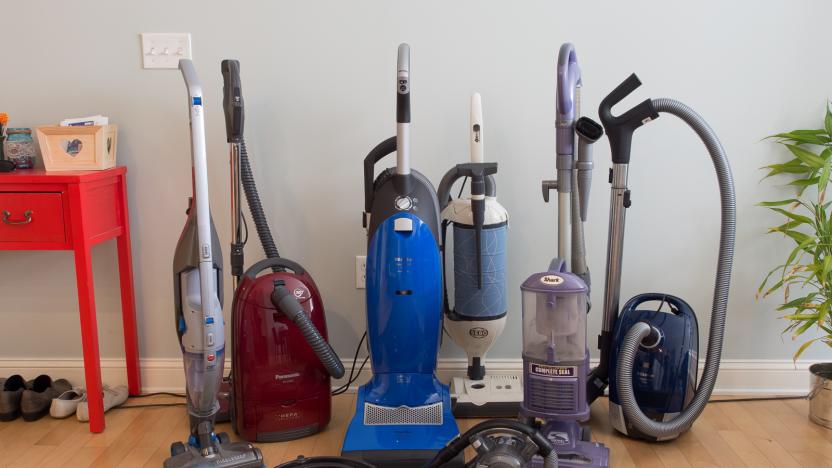
The best vacuum cleaners
By Liam McCabe This post was done in partnership with Wirecutter. When readers choose to buy Wirecutter's independently chosen editorial picks, Wirecutter and Engadget may earn affiliate commission. Read the full vacuum cleaners guide here. We've done hundreds of hours of research and testing on vacuum cleaners over the past five years, searching for the best ones to fit all kinds of living situations and lifestyles. This guide will help you figure out the right kind of vacuum to suit your home, whether it's a small apartment or a big Victorian, covered with shag carpets or left with bare wood floors, or filled with kids and pets.
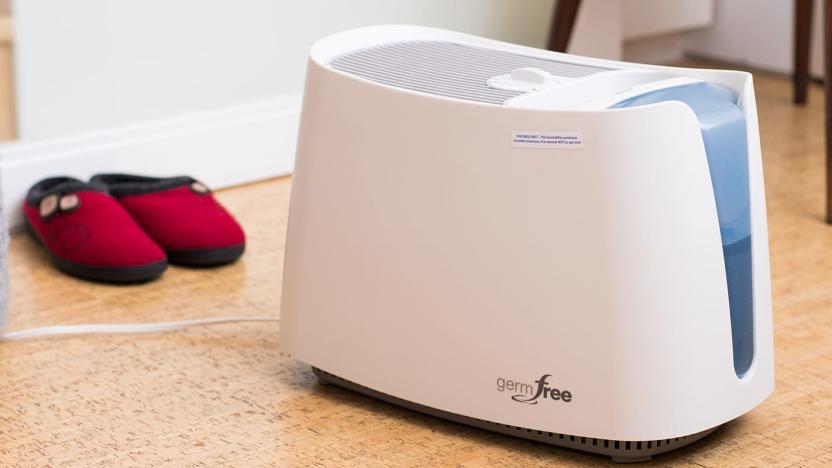
How to clean a humidifier
By Tim Heffernan This post was done in partnership with Wirecutter. When readers choose to buy Wirecutter's independently chosen editorial picks, Wirecutter and Engadget may earn affiliate commission. Read the full blog on how to clean a humidifier here. Cleaning a humidifier is not hard. Below, we'll walk you through the steps. But far more important than how you clean your humidifier is that you clean it. If you had to design an ideal appliance for growing microbes—mold, bacteria, amoebae—you'd come up with something like a humidifier. Ample water? Check. Ample air? Check. Lots of surface area? Check. Easy to ignore? Check plus. The impact of microbial growth in humidifiers is so common that it has a name: humidifier lung. The condition is a so-called hypersensitivity pneumonitis. Humidifiers can harbor microbes and blow them or their excretions into your air, triggering an immunoresponse. In acute (sudden, severe) cases, humidifier lung can present symptoms akin to an asthmatic or allergic attack, as Wirecutter's Tim Barribeau and his now-wife discovered: "I woke up feeling like we were dying. We both had incredibly tight chests, where we couldn't get in enough air to breathe properly, accompanied by constant coughing fits and tunnel vision." In chronic cases (low-level, long-term, untreated), it can cause permanent scarring of lung tissue and reduced lung capacity. The risk of humidifier lung is especially high for infants and children, which is why we spoke with the American Academy of Pediatrics for—and emphasize regular cleaning in—our guide to humidifiers for babies. But adults, as Tim's case illustrates, are also vulnerable. And although humidifier manufacturers are aware of the risk too, and take steps to eliminate microbes such as installing UV bulbs and antimicrobial treatments, they also recommend regular cleaning; the Association of Home Appliance Manufacturers says to do it weekly on every humidifier. Better to be doubly safe than twice sorry. Furthermore, adults are also vulnerable to ignoring the health risks of dirty humidifiers even when they're fully aware of them. I can attest to this: I long-term tested our upgrade humidifier pick for about four months in winter 2017–18, and I can recall cleaning it exactly once. I knew full well that weekly cleaning was recommended—I'm the goldang author of our humidifier guides! Luckily, I got away with it. But don't be like me. Clean your humidifier at least weekly. Here's how:
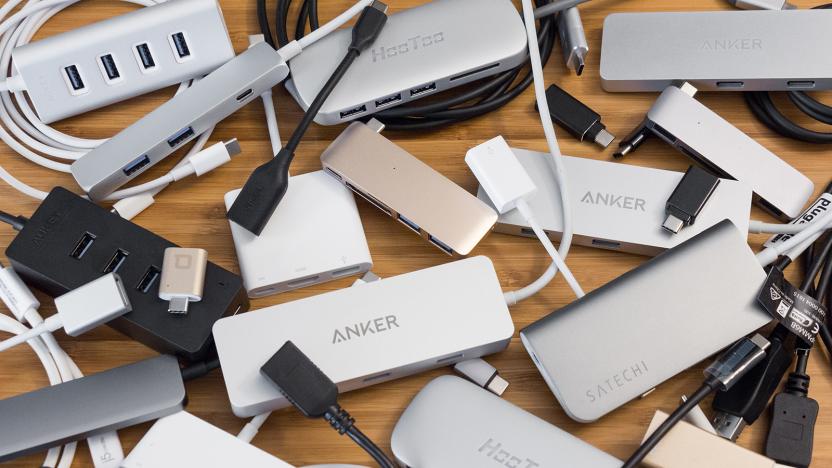
The best USB-C adapters, cables and hubs
By Nick Guy and Sarah Witman This post was done in partnership with Wirecutter. When readers choose to buy Wirecutter's independently chosen editorial picks, Wirecutter and Engadget may earn affiliate commission. Read the full USB-C adapters, cables, and hubs guide here. When Apple introduced the 12-inch MacBook in early 2015, USB-C was merely a curiosity for most people, but now that many new laptops have dropped legacy ports, USB-C has gone from interesting to important. The 13-inch and 15-inch MacBook Pro models, as well as Windows laptops from HP, Asus, Acer, and more, offer only USB-C ports, and a number of Android smartphones use USB-C as their only physical connection. This all means that a critical mass of people need cables, adapters, and other ways to get older gear working with newer devices. After 18 hours of preliminary research, we tested more than 58 USB-C accessories to put together this guide to the best ways to connect peripherals and devices to a USB-C–equipped computer. It's by no means exhaustive. USB-C can, in theory, replace every other port, and there are a seemingly infinite number of port combinations you might encounter. We focused on the most important tasks you'll likely face, such as connecting older peripherals like hard drives and hooking up an external display. We'll expand our coverage of USB-C as the field matures; we've published reviews of SD card readers, portable solid-state drives, portable battery packs, portable AC battery packs, Thunderbolt docks, Lightning cables, flash drives, car chargers, charging-port outlets, and laptop chargers, and we have more in the works. If you think we've missed something specific, please let us know.

How to use your existing phone overseas
By Geoffrey Morrison This post was done in partnership with Wirecutter. When readers choose to buy Wirecutter's independently chosen editorial picks, Wirecutter and Engadget may earn affiliate commission. Read the full blog here.
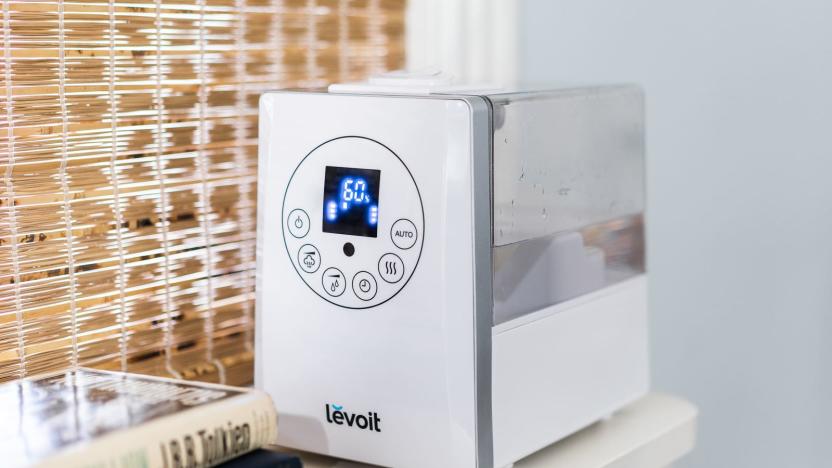
The best humidifier for a large room
By Tim Heffernan This post was done in partnership with Wirecutter. When readers choose to buy Wirecutter's independently chosen editorial picks, Wirecutter and Engadget may earn affiliate commission. Read the full large room humidifier guide here.

The best deep fryer
By Michael Sullivan This post was done in partnership with Wirecutter. When readers choose to buy Wirecutter's independently chosen editorial picks, Wirecutter and Engadget may earn affiliate commission. Read the full deep fryer guide here.

What Is your security camera missing?
By Rachel Cericola This post was done in partnership with Wirecutter. When readers choose to buy Wirecutter's independently chosen editorial picks, Wirecutter and Engadget may earn affiliate commission. Read the full blog here. People use Wi-Fi cameras for all kinds of things, from checking on the dog to confirming that they turned off the stove burner. But people who use them for home security expect the camera to be able to record everything that happens in front of them. However, that's not always how these things work. Most Wi-Fi cameras can't actually catch everything, and we're not talking about angles and field of view. After spending months testing over 20 indoor and outdoor cameras, I've discovered that less than a handful of units can make reliable recordings where you won't miss a second of the action. Almost every Wi-Fi camera is designed to record when it detects motion happening. Most also have a recording time limit, anywhere between five seconds and five minutes, so the video sizes don't get unmanageable. If motion continues beyond that time limit, you expect the camera to instantly start another clip. That way, you don't miss a face, a raccoon, or whatever else is going bump in the night. However, most cameras leave a gap in between those recorded clips. Camera manufacturers call this a "reset" period or "retrigger" time.

The best foam mattresses you can buy online
By Kevin Purdy This post was done in partnership with Wirecutter. When readers choose to buy Wirecutter's independently chosen editorial picks, Wirecutter and Engadget may earn affiliate commission. Read the full mattresses guide here. We've researched more than 40 of the top online mattress companies, surveyed hundreds of Wirecutter readers about their mattresses, interviewed experts on sleeping and mattress design, and spent more than 18 months sleeping on and assessing foam mattresses. All of that leads us to recommend the Leesa as a mattress that will work well for most people who sleep on their side or stomach. The Leesa offers support at the body's pressure points as well as a contouring "hug" that feels comfortable rather than hot or muddy. It breathes to promote cool sleeping, it fared well in eight-year durability tests, and it's just a bit firmer at the edges than the competition. It isn't the best choice for everyone, but it is a good fit for many people. It's also easier to try than a store mattress, because you have 100 days to return and refund your purchase. If you switch between back-sleeping and side-sleeping, or if one of two people sharing a bed tends toward back-sleeping or prefers a firmer mattress, Casper's signature mattress is a better pick than the Leesa. Side-sleepers may find the Leesa relieves more pressure where they sink in (shoulders, elbows, and hips) than the Casper, but by only a small margin. The Casper is a very close runner-up to the Leesa, especially for singles or couples who vary the side they sleep on. For dedicated back-sleepers who prefer a firm mattress but don't want to spend a lot on a spring model, we think the Tuft & Needle mattress works well. It feels better to those who like a particularly firm surface (more supportive than pressure-relieving). The Tuft & Needle has a convenient trial period and comes with a solid warranty. If you want to spend less, the Zinus Green Tea Memory Foam 12-Inch Mattress is a reasonably good, low-cost option. We didn't think it was quite as comfortable as our other picks—its top layer has a squishier memory-foam feel, its core layers seem stiffer, and some people may find it warmer to sleep on—but a lot of people find this to be a perfectly comfortable, supportive mattress. We believe it would make an excellent choice for a child's room or a guest room, or if you simply can't spend $600 to $1,000 on a mattress right now. If you tend to sleep hot or if you know you don't like the sink-and-hug feel of memory foam, we recommend the Pure Green Natural Latex Mattress. This is similarly priced to the Leesa and Casper mattresses, and we would recommend going for this instead if you want to feel more like you're floating on top of the mattress. The Pure Green is the only all-latex option we've tested, but it receives higher overall ratings than other latex mattresses and comes at a better price. The latex doesn't hug the body like memory foam, but still provides great support (especially to the hips and shoulders). We tested the 9-inch mattress (in medium firmness) and recommend it for back- and stomach-sleepers. Sleep on Latex says the soft model works better for side-sleepers. For our initial tests, we slept on six mattresses for a week. Since we first published this guide in April 2016, we've started testing one new foam mattress each month. So far, we've tried Casper's updated model, released in mid-2017, Purple, Helix, GhostBed, Loom & Leaf, Costco's Novaform Serafina Pearl Memory Foam Mattress, Casper's more affordable Essential mattress, and the UK-based Eve Mattress. We'll continue to test one new mattress every month (give or take a few days) and compare it with those from Leesa, Casper, Tuft & Needle, Zinus, and Sleep on Latex's Pure Green.
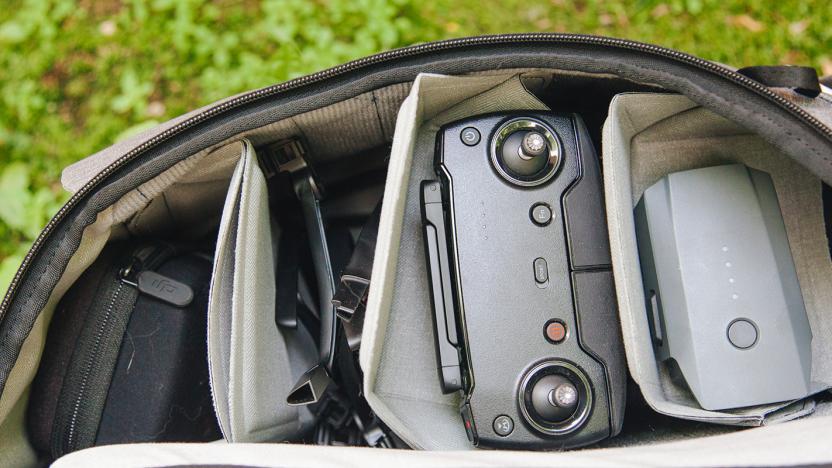
How to safely charge and store lithium drone batteries
By Signe Brewster This post was done in partnership with Wirecutter. When readers choose to buy Wirecutter's independently chosen editorial picks, Wirecutter and Engadget may earn affiliate commission. Read the full blog here. Although flying a drone might sound like the biggest risk in operating one, dealing with the batteries is potentially more explosive. At the 100 hospital emergency rooms that report electronics-related injury cases to the US Consumer Product Safety Commission, more than 200 incidents (PDF) involving drone batteries, stemming from fire, smoke, and explosions, were recorded between 2012 and 2017. Not every drone-battery incident results in an injury, but each pilot and expert I interviewed had a story about an exploding or fiery lithium battery going off especially after it had repeatedly crashed to the ground inside a drone. "When the batteries go, it's like a little bomb," drone pilot and HubHobby employee Brandon Reinert said. "It's usually pretty spectacular." The most common type of battery that powers racing and photography drones is lithium-polymer, or Li-po, a kind of lithium-ion battery that packs more energy storage into smaller spaces. To find out how to reduce the risk of a spectacular battery failure and get drone batteries to last longer and perform better, I spoke to battery and drone experts about the right way to charge, use, and care for them.
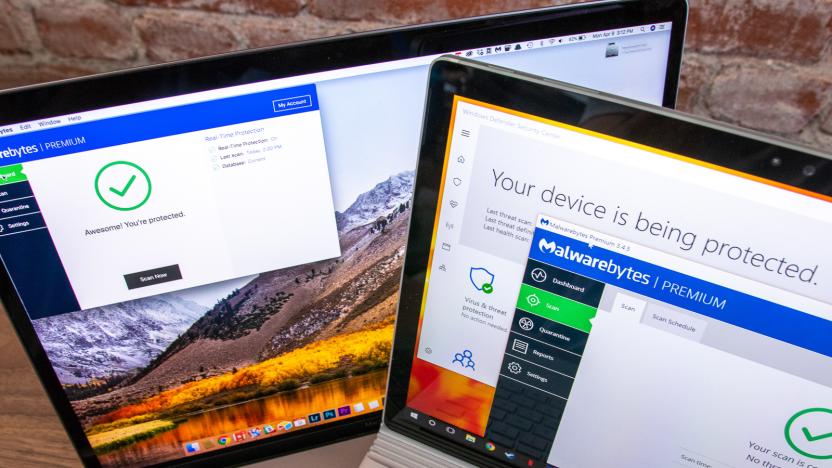
The best antivirus is not traditional antivirus
By Kevin Purdy This post was done in partnership with Wirecutter. When readers choose to buy Wirecutter's independently chosen editorial picks, Wirecutter and Engadget may earn affiliate commission. Read the full blog here. We set out to do a standard Wirecutter guide to the best antivirus app, so we spent months researching products, reading reports from independent testing labs and institutions, and consulting experts on safe computing. And after all that, we learned that most people should neither pay for a traditional antivirus suite, such as McAfee, Norton, or Kaspersky, nor use free programs like Avira, Avast, or AVG. The "best antivirus" for most people to buy, it turns out, is not a traditional antivirus package. Information security experts told us that the built-in Windows Defender is good-enough antivirus for most Windows PC owners, and that both Mac and Windows users should consider using Malwarebytes Premium, an anti-malware program that augments both operating systems' built-in protections. These options provide reliable protection without slowing your computer significantly, installing unwanted add-ons, or harassing you about upgrades. Malwarebytes is not an all-in-one option for protecting your system against exploits, malware, and other bad stuff. But information security experts repeatedly recommended it as a useful anti-malware layer, one of multiple layers of security you need for your devices, coupled with good habits. Relying on any one app to protect your system, data, and privacy is a bad bet, especially when almost every security app—including Malwarebytes and Windows Defender—has proven vulnerable on occasion. You should have good virus and malware protection, yes, but you also need secure passwords, two-factor logins, data encryption, and smart privacy tools added to your browser. Check out our guide to setting up those layers here.
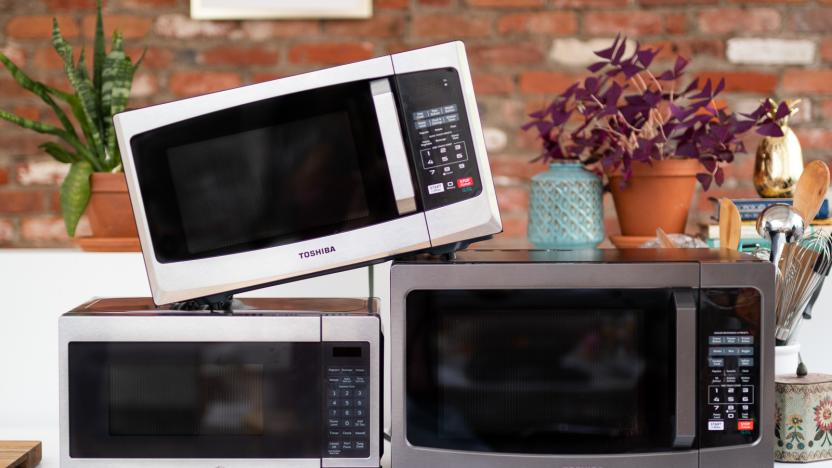
The best microwave
By Michael Sullivan, Tim Heffernan, Ganda Suthivarakom and Jessie Kissinger This post was done in partnership with Wirecutter. When readers choose to buy Wirecutter's independently chosen editorial picks, Wirecutter and Engadget may earn affiliate commission. Read the full microwave guide here. After more than 100 hours of research and testing—"baking" potatoes, cooking frozen mac and cheese, popping popcorn, and reheating beverages—we think that the Toshiba EM925A5A-BS is the best microwave for most kitchen counters. It's easy to operate, has a number of express cooking options that heat food quickly and evenly, and even has a mute button so you can cook in silence. The affordable Toshiba EM925A5A-BS microwave is simple to use, with a plainly labeled keypad and intuitive controls. It cooked popcorn, baked potatoes, and frozen mac and cheese perfectly every time, and its mute button—a rare feature that lets you stealthily reheat midnight snacks without waking your housemates. We also appreciated the express cooking option, which immediately starts the microwave with a press of one of the numbered buttons (from 1 to 6 minutes). A dedicated plus-30-seconds button helps further fine-tune cook times. The compact 0.9-cubic-foot Toshiba model is large enough to fit an 11-inch dinner plate or a 9-inch square casserole dish. It's also available in a stainless steel or black stainless steel exterior. The Toshiba EM131A5C-BS is best for anyone seeking out a slightly bigger, more powerful 1,100-watt microwave. It looks very similar to our main pick, the Toshiba EM925A5A-BS, but offers a few more express controls for specific tasks like cooking bacon, defrosting frozen muffins, and making oatmeal. It also has a Soften/Melt button for butter, chocolate, cheese, and marshmallows. However, we found these additional controls less intuitive to operate than what our other picks offer, and we don't think they'll get used often. This Toshiba also boasts a cooking sensor that's supposed to automatically determine when your pizza or potato is hot enough, but it didn't perform any better than the 0.9-cubic-foot Toshiba, which lacks this feature. The 1.2-cubic-foot Toshiba has a larger 12-inch turntable, so it will fit most dinner plates and a 9-inch square casserole dish. Like our main pick, this model is available in a stainless steel or black stainless steel exterior. For those looking to save space and money, we recommend the GE JES1072SHSS. This tiny 0.7-cubic-foot unit is about the size of a small toaster oven, but its turntable is only ¼ inch smaller in diameter than the 0.9-cubic-foot Toshiba microwave. That means it hogs less counter space but can still fit a 10¾-inch dinner plate or 9-inch square casserole dish. Like the small Toshiba, it has a user-friendly interface, express cooking controls from 1 to 6 minutes, and a mute button. It also has express cooking functions for popcorn, beverages, and potatoes, but not for other things like vegetables and pizza (functions our other picks include). At 700 watts, it doesn't heat as quickly as our other picks, but it's the best microwave we've tested in this size category.

How to clean earbuds and headphones
By Lauren Dragan This post was done in partnership with Wirecutter. When readers choose to buy Wirecutter's independently chosen editorial picks, Wirecutter and Engadget may earn affiliate commission. Read the full blog here. Everything we wear on our bodies, from hats to socks, eventually needs cleaning. Just as your clothes get filthy (from the environment) and sweaty (from you), your headphones pick up dirt from all around you and react to your own secretions—and they need cleaning too. And just like your clothes stay looking good longer if you fold them neatly before putting them away, taking a little care when storing your headphones will keep them working like new. We've got some tips for both. As we wear headphones, our skin cells, sebum, ear wax, and facial products stick to the parts that touch our ears and face, and the ever stickier headphones then pick up more dirt from the world around us every time we take them off, put them down, or put them in a bag. The takeaway? Clean your dang headphones, people. And definitely give them a wipe down before borrowing or lending a pair. Not only will making sure your headphones are clean and comfortable help them to last longer, but can, in the case of earbuds, even keep them sounding better. Here are a few tips on how to clean and care for your headphones. Regularly wipe down headphones' earpads and tips with a mixture of soap and warm water on a lightly damp cloth. Ideally, you should do this once a week. Make sure the headphones are off, if powered, and disconnected from your device. Dry fully with a soft cloth immediately. Don't use alcohol, as it can remove color or break down leather or fabric faster. As long as you use soap and water, it will clean off any nasties.

The best electric kettle
By Michael Sullivan, Winnie Yang and Tim Barribeau This post was done in partnership with Wirecutter. When readers choose to buy Wirecutter's independently chosen editorial picks, Wirecutter and Engadget may earn affiliate commission. Read the full electric kettle guide here. We've spent dozens of hours researching and long-term testing electric kettles. For the fifth year in a row, we think the Cuisinart CPK-17 PerfecTemp Cordless Electric Kettle is the best electric kettle for most people. It's a high-end, variable-temperature model that's ideal for brewing myriad teas, making pour-over coffee, or simply boiling water for instant oatmeal. Thanks to its winning combination of speed, accuracy, and ease of use, it bested all the other electric kettles we tested. The Cuisinart CPK-17 won us over with its consistent performance and easy-to-use interface. In our tests, we found very little variation in the amount of time it took to bring water to a boil, and we were also impressed with its accuracy in holding water at a set temperature. It has six preset temperature choices, each with a dedicated button, as well as buttons to start boiling and to activate the Keep Warm feature. It emits alerts when you press a button and when the water reaches its target temperature, but unlike with some of the other models we tested, those beeps aren't too obnoxious or annoying. The three-year warranty is also quite a bit more generous than the coverage for similarly priced electric kettles. Pour-over coffee lovers will appreciate the precise aim of the Bonavita BV382510V 1.0L Digital Variable Temperature Gooseneck Kettle. This smaller, 1-liter model is lightweight and easy to hold, so your hands won't tire while pouring. Tea lovers will also like its spot-on temperature accuracy: You can set the Bonavita to any temperature between 140 degrees Fahrenheit and 212 °F, so it's ideal for brewing all varieties of tea. This model even has the ability to hold a set temperature for up to an hour, 30 minutes longer than our main pick. For larger households, we recommend the 1.7-liter version of this kettle. We recommend the inexpensive Hamilton Beach 40880 Stainless Steel 1.7 Liter Electric Kettle for anyone who doesn't want to break the bank but still wants a decent kettle. Using this stainless steel model is very straightforward: You switch the tab up on the kettle to boil water, and it shuts off automatically as soon as the cycle is complete. In our tests, the Hamilton Beach 40880 had one of the fastest boil times; the handle also stayed cool after boiling, and the spout didn't dribble when pouring. This kettle has all of the features we look for in a basic model at a bargain price.

Blend-Off: Vitamix vs. Blendtec
By Lesley Stockton This post was done in partnership with Wirecutter. When readers choose to buy Wirecutter's independently chosen editorial picks, Wirecutter and Engadget may earn affiliate commission. Read the full Vitamix vs. Blendtec guide here. Vitamix and Blendtec are the two biggest names in high-powered home blenders. In our testing, we've always preferred Vitamix. We still get asked about Blendtec, though, maybe thanks to its popular "Will It Blend?" campaign, which features a Blendtec pulverizing iPhones and other objects that would taste bad in smoothies. The image of a phone turned to dust is a compelling demonstration of raw power, but pulverizing a phone and making a good smoothie are two very different tasks. To prove it, we pitted the Blendtec Designer 675 against the Vitamix 5200 (our top-pick blender) in a series of tests, and the Vitamix won every time. The Vitamix was much better at smoothies, soups, nut butters—the things you'd need a kitchen blender for, in other words. We chose to compare those two models because they offered roughly similar features and control schemes. The 5200 is Vitamix's original variable-speed model, and it offers the power and performance Vitamix blenders are known for. Vitamix blenders with preset blending programs are more expensive, and we don't think they're worth the extra cost. Meanwhile, lower-end Blendtec machines have only preset blending programs, and the Designer 675 is the lowest-priced model that offers manual speed control in addition to those settings.
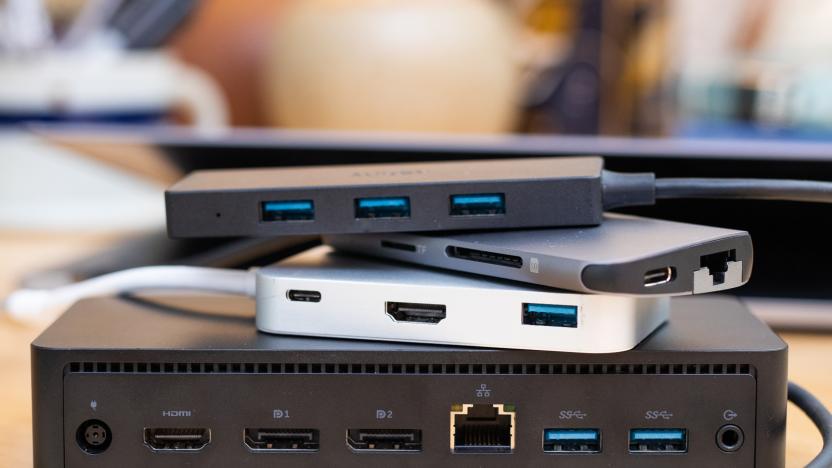
The best USB-C hubs and docks
By Nick Guy This post was done in partnership with Wirecutter. When readers choose to buy Wirecutter's independently chosen editorial picks, Wirecutter and Engadget may earn affiliate commission. Read the full USB-C hubs and docks guide here. After spending 20 hours testing 22 USB-C hubs and five USB-C docks, we think Vava's VA-UC006 USB-C Hub is the best option for connecting older peripherals and external storage devices to a new laptop or MacBook. It has an ideal range of ports that all transfer data at full speed, it's sturdily built, it's small and light enough to throw in a bag, and it's reasonably priced. With three USB-A ports plus HDMI (with 4K support), Ethernet, SD, microSD, and power passthrough, the Vava VA-UC006 offers the connectors most people need most of the time. It's powerful enough to leave at your desk full-time as a docking station but small enough to slip in your laptop bag and use on the go. The only downside is that the Ethernet port hinges open, a design that saves space but is more likely to break than a standard Ethernet port. For about half the price of the Vava, Dodocool's 6-in-1 Multifunction USB-C Hub offers performance similar to that of our top pick as well as an extra USB-A port, but it lacks SD and microSD card readers and an Ethernet port. We think the Vava's more versatile port selection, smaller size, and better build quality are worth paying for, but the Dodocool is a good option if you need something less expensive. If you just need more USB 3.0 ports for flash drives, keyboards, mice, and other low-power accessories, Aukey's USB C to 4-Port USB 3.1 Gen 1 Hub (CB-C64) is the best option we tested, and the least expensive. It's a straightforward plastic adapter with four full-speed USB 3.0 ports. But its lack of passthrough power makes it a poor choice if your computer has only one or two USB-C ports, as the MacBook does. If you need only an Ethernet connection, we like the Cable Matters USB Type-C to Gigabit Ethernet Adapter. It delivers full Gigabit speed, it comes from a reputable company, and it's inexpensive. It did get warm when we used it, which is to be expected with USB-C Ethernet adapters, but it reached the same temperature as a more expensive model we tested. Docks are larger and usually equipped with more ports than hubs, and they can provide power on their own, making them a better fit if you're looking for something to set on your desk permanently. Among the five USB-C docks we tested, Dell's D6000 Universal Dock is the best, with four USB-A ports, a USB-C port, HDMI and two DisplayPort video ports, Gigabit Ethernet, and a 3.5 mm audio connector. It worked equally well with a PC and a Mac in our testing. It also delivers 65 watts—the most charging power of any dock we measured—and it's the least expensive dock option (though it's still more than twice as expensive as the Vava hub).
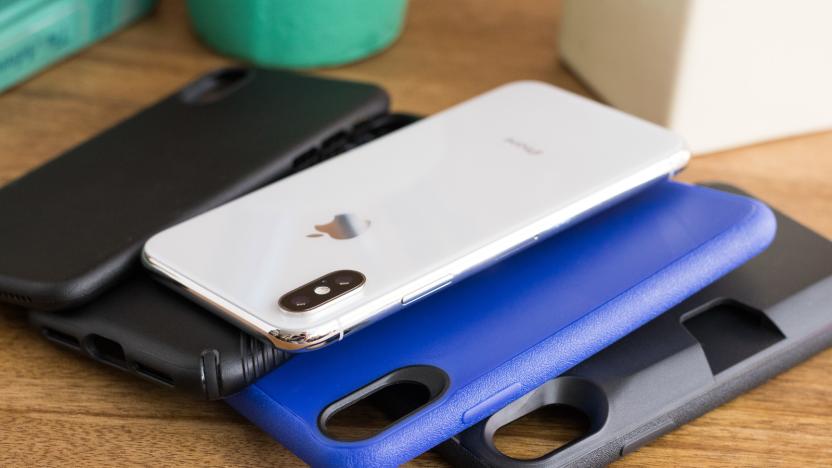
The best iPhone cases
By Nick Guy This post was done in partnership with Wirecutter. When readers choose to buy Wirecutter's independently chosen editorial picks, Wirecutter and Engadget may earn affiliate commission. Read the full iPhone cases guide here. A good case is a wise investment for your iPhone. Even the least expensive iPhone is pricey, and the right case will offer protection against scratches, dings, and cracks—and allow you to personalize your phone—without adding much extra bulk or changing how you use your phone. We've tested hundreds of cases for every iPhone back to the iPhone 5, and we think the Silk Base Grip (available for iPhone X, iPhone 7, and iPhone 8 models) is the best case for current iPhones, offering solid everyday protection at a low price. But we have recommendations for older phones, too.

The best electric toothbrush
By Casey Johnston, Tracy Vence and Shannon Palus This post was done in partnership with Wirecutter. When readers choose to buy Wirecutter's independently chosen editorial picks, Wirecutter and Engadget may earn affiliate commission. Read the full electric toothbrush guide here. (image-01) To find the best electric toothbrush, we put in almost 100 total hours of research, interviewing experts, evaluating every model on the market, and testing 12 toothbrushes ourselves in hundreds of trials at the bathroom sink. We found that the best toothbrush for most people is a simple model called the Oral-B Pro 1000. It has the fewest fancy features of the models we tested, but it does have the most important things experts recommend—a built-in two-minute timer and access to one of the most extensive and affordable lines of replaceable toothbrush heads available—for the lowest price. That, according to the experts we spoke to, is as much as an electric toothbrush can or should do for you. The extras available in electric toothbrushes that cost $150 more don't make them any more effective than the Pro 1000. The Oral-B Pro 1000 brush comes with a minimal charging pedestal that simply requires dropping the brush onto a peg. Fully charged, it lasts for at least a week of twice-daily two-minute brushing sessions before needing a recharge, which is on a par with the other toothbrushes we tested in this price range and plenty for most people. If you can't find the Oral-B Pro 1000, get the runner-up, the Philips Sonicare 2 Series. Like the Pro 1000, the 2 Series is not trumped up with unproven features and includes everything you need in an electric toothbrush. The 2 Series runs much more quietly, but unlike the Pro 1000, it comes to a full stop after two minutes of brushing (rather than restarting the cycle as the Pro 1000 does) and has a less diverse, more expensive range of brush heads, giving you fewer options for texture and shape. If a subscription service will help you replace your brush heads regularly, Goby has all the features we look for in a brush: a 30-second quadrant timer that stops after two minutes and a rechargeable battery. The Goby has only one type of brush head available (rotating), so if you like to customize your brush this service may not be for you.

Ben Heck's Pocket Beagle drum sequencer
Felix takes his hand to the soldering iron, picks up Beagleboard.org's Pocket Beagle and assembles a drum sequencer with the help of the Bela Mini audio cape. With a laser-engraved case, hands-on assistance from S. Astrid Bin and a custom-designed input-output matrix for driving the LEDs, Felix puts it all together with C++. Have you made an electronics audio device, or a project with the Pocket Beagle? Let the team know on the element14 Community.
